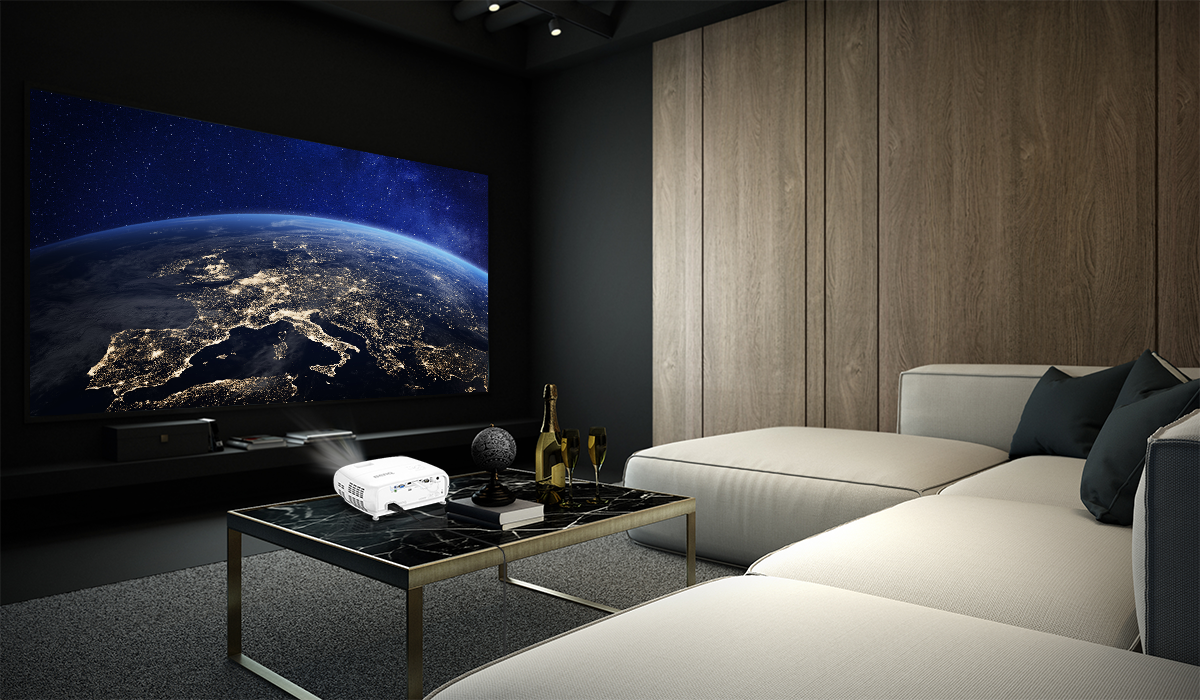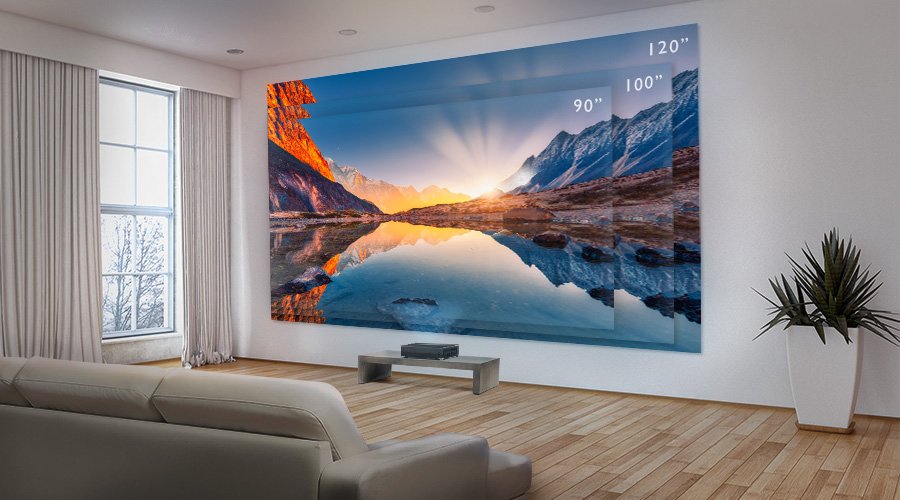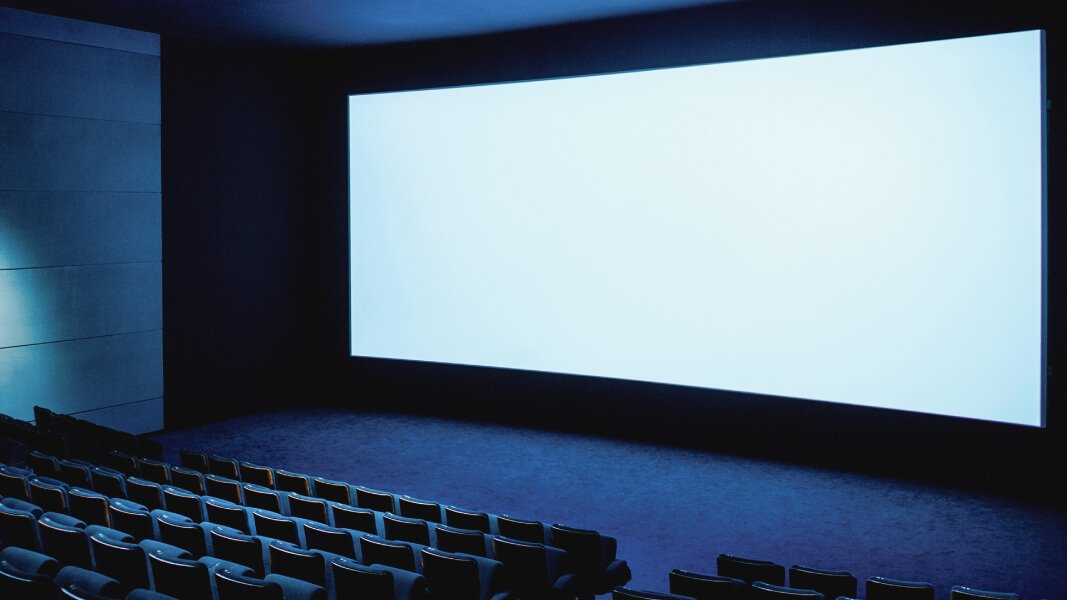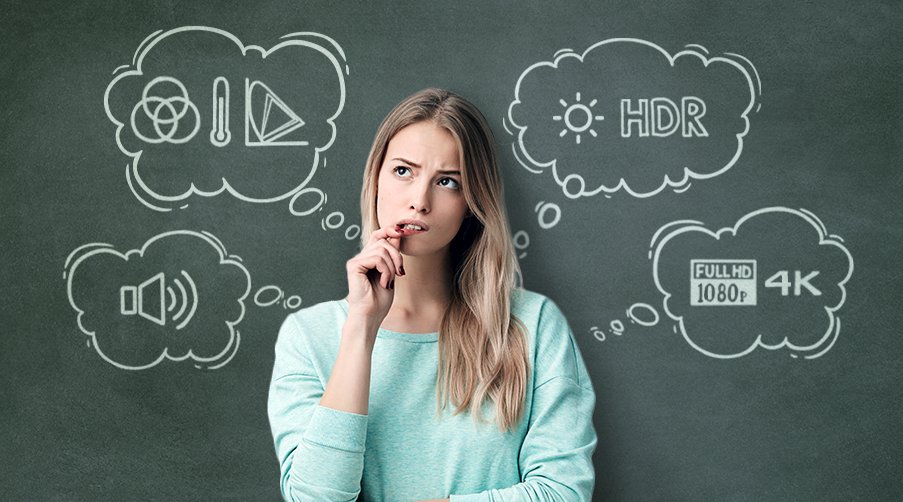If you do not have a dedicated media room, a retractable screen might give you the flexibility needed. This type of screen can be rolled down when you crave some movie enjoyment and then quickly rolled up and out of sight when you’re done. You can place such screens in front of any wall or even your already-there TV.
Retractable screens also give you more ways to integrate the screen into your room in an inconspicuous way, hiding it away until ready to use. They come in two main varieties: pull-up and pull-down. Pull-down screens can be wall or ceiling mounted, allowing you to keep the whole screen away from view in a recessed space in the ceiling. Pull-up screens, on the other hand, are usually placed on the floor behind your media center or integrated into a custom-made piece of furniture, magically popping out for movie time.
Either one of these two types of retractable screens work equally well. However, for any retractable screen, there are two additional aspects you should keep in mind.
The first one is that to obtain the best performance out of a retractable screen, you should look for a tab-tensioned one. This type of screen has a system behind it to ensure that the surface is perfectly tight and flat when pulled out, while the whole tensioning system also moves out of the way when the screen is rolled in. Without tensioning, retractable screens tend to have curling and wrinkling that impact your video experience, creating distortions and image wobbling, most noticeable during panning shots.
The second important aspect is that any of these retractable screens can come in a manual or motorized variety. Manual screens are light, less expensive, and don't need any electricity to work, which makes them easier to install anywhere very quickly. Since there is no risk of a motor failing over time, they represent less maintenance and more years of service. On the downside, you have to get up from your seat and pull these screens out by hand before use, which can seem inconvenient when everything else has a remote control.
Motorized projector screens exist to remedy that inconvenience. They offer the most stylish look for your home theater as they slowly and gracefully emerge from their enclosure for your movie session at the touch of a button. These electric screens can be rolled out by using either a remote control, a wall switch, or by connecting them to the 12V trigger port that is available on many projectors. You have to keep in mind that they require a power supply and also cabling if you decide to use the automatic trigger function. Motorized electric projector screens tend to be the most expensive but also offer the most functionality and flexibility of all types.






